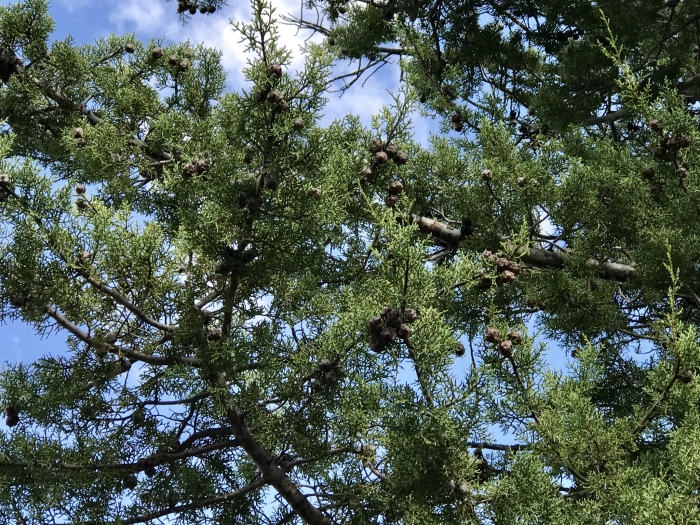Arizona Cypress
(Hesperocyparis arizonica)
Arizona Cypress (Hesperocyparis arizonica)
/
/

CK Kelly
CC BY 4.0
Image By:
CK Kelly
Recorded By:
Copyright:
CC BY 4.0
Copyright Notice:
Photo by: CK Kelly | License Type: CC BY 4.0 | License URL: http://creativecommons.org/licenses/by/4.0/ | Rights Holder: CK Kelly | Publisher: iNaturalist | Date Created: 2017-09-09T22:33:51Z |
































































Estimated Native Range
Summary
Hesperocyparis arizonica, commonly known as Arizona Cypress, is an evergreen tree with a conic to ovoid-conic form. It is native to a variety of habitats including chaparral, riparian areas, and forests in the Southwestern USA and Northern Mexico. The species is adapted to dry, rocky sites and open woodlands. It can grow to heights of 10–25 m (33–82 ft) with a trunk diameter of up to 55 cm (22 in). The dense foliage varies from dull gray-green to bright glaucous blue-green, and the tree is notable for its attractive bark which peels in thin, longitudinal strips. The cones are serotinous, remaining closed for years and only opening after the death of the bearing branch, a trait that allows the species to regenerate after wildfires. The male cones are small, 3–5 mm long, and release pollen in February–March.
Arizona Cypress is valued for its drought tolerance and is often used in xeriscaping. It is also planted as a windbreak, for erosion control, and as an ornamental tree due to its striking blue-green foliage. It is resistant to cypress canker, making it a reliable choice where this disease is prevalent. The tree requires full sun, low water once established, and well-drained soils. Popular garden cultivars include ’Blue Ice’ and ’Carolina Sapphire’, which are chosen for their intense blue foliage.CC BY-SA 4.0
Arizona Cypress is valued for its drought tolerance and is often used in xeriscaping. It is also planted as a windbreak, for erosion control, and as an ornamental tree due to its striking blue-green foliage. It is resistant to cypress canker, making it a reliable choice where this disease is prevalent. The tree requires full sun, low water once established, and well-drained soils. Popular garden cultivars include ’Blue Ice’ and ’Carolina Sapphire’, which are chosen for their intense blue foliage.CC BY-SA 4.0
Plant Description
- Plant Type: Tree
- Height: 20-50 feet
- Width: 20-40 feet
- Growth Rate: Moderate
- Flower Color: N/A
- Flowering Season: Spring, Fall
- Leaf Retention: Evergreen
Growth Requirements
- Sun: Full Sun
- Water: Low
- Drainage: Fast, Medium
Common Uses
Bank Stabilization, Bird Garden, Deer Resistant, Drought Tolerant, Erosion Control, Fragrant, Hedges, Hummingbird Garden, Low Maintenance, Salt Tolerant, Street Planting
Natural Habitat
Chaparral, riparian areas, forests, dry, rocky sites, and open woodlands in the Southwestern USA and Northern Mexico
Other Names
Common Names: Arizona Smooth Cypress , Cuyamaca Cypress , Piute Cypress , Arizona-Zypresse , Cedro , Cedro Blanco , Ciprés De Arizona , Ciprés Fibrosa , Cyprès Bleu , Cyprès De L’Arizona
Scientific Names: Cupressus arizonica
GBIF Accepted Name: Cupressus arizonica Greene